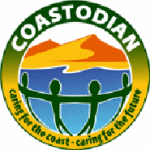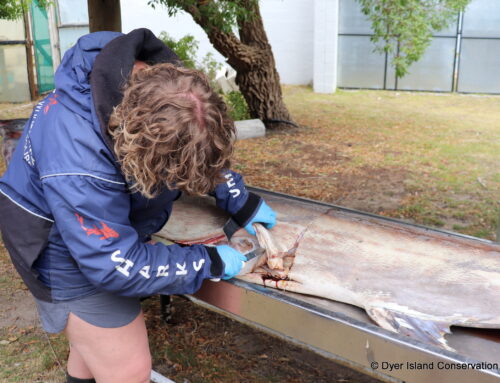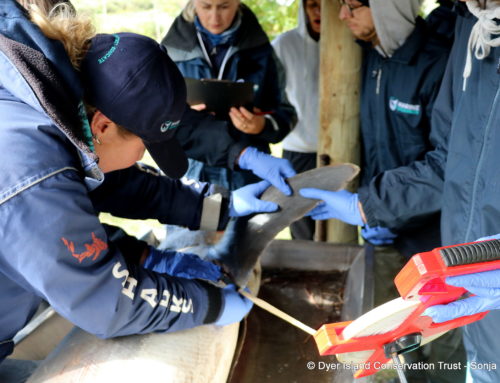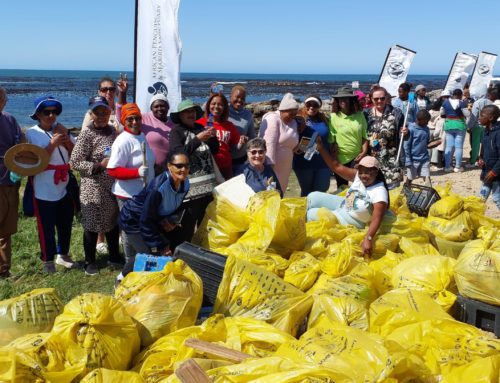ROGUE HELICOPTER CAUSES HAVOC TO MARINE LIFE AT MERCURY ISLAND
April 29, 2010 by dyertrust

Following this manoeuvre, the helicopter landed on the beach across the bay in the Namib-Naukluft National Park near the Otavi wreck and disturbed the seal colony there.
Mercury Island is the jewel of the newly proclaimed Namibian Islands Marine Protected Area (NIMPA) and is the most important breeding site for many endangered species. This tiny island (3 hectares of steep rock) is an internationally recognized Important Bird Area (IBA) and is home to tens of thousands of seabirds.
Nearly three quarters of the world population of the rare and endangered Bank Cormorant breeds on Mercury Island at this time of the year and more than 300 nests of this species were destroyed in a matter of seconds, with eggs and young chicks hurled into the sea by the powerful draught of the helicopter rotor.
Mercury Island also supports the largest Namibian colony ofAfrican Penguins(and the third largest worldwide). TheAfrican Penguinis endangered in Namibia and being reclassified worldwide as endangered following a drastic decline throughout its range. Again many nests of this species were lost, while panicking moulting penguins ended up in the sea (during their annual moult penguins are land bound as they lack insulation to cope with the cold seawater, and going to sea at this stage can have dire consequences for their survival).
TheCape Gannetonly breeds at six colonies in the world (three in Namibia and three in South Africa) and is endangered in Namibia and vulnerable worldwide. Mercury Island holds the second largest Namibian colony of this species and in the panic caused by the helicopter chicks not yet able to fly ended up in the sea. Thousands ofCape Cormorantstook to the air in a mass aerial stampede.
This helicopter was probably on a sightseeing tour from one of the luxury guest lodges bordering the Namib Desert. Not only did this tour cause major environmental damage, but the pilot also clearly disregarded basic air safety rules by flying low and attempting to land on a seabird island. A bird striking a helicopter turbine or tail rotor can cause the complete destruction of such an aircraft in seconds. In addition to disturbing and killing many protected and endangered seabirds, this pilot also put his and his guests lives at risk.
The Ministry of Fisheries and Marine Resources, with the help of the NACOMA project, has worked very hard over the last years to protect the sensitive habitat of our endangered seabirds and the NIMPA. Namibias first Marine Protected Area, was proclaimed by Cabinet decision only a year ago (16 February 2009) and it was officially launched on 2 June 2009 at Lderitz.
The Marine Resources Act specially protects all seabird species in Namibia and it is also illegal to disturb seal colonies. Through the regulations of the Directorate of Civil Aviation, Ministry of Works and Transport, it is illegal for an aircraft to fly at low altitude over National Parks and proclaimed nature reserves, let alone entering a National Park without a permit.
NACOMA therefore requests the Directorate of Civil Aviation to thoroughly investigate the pilots blatantly illegal, destructive and irresponsible conduct and to ensure that such incidents are prevented in future for the sake of our environment and not least for passenger safety.
Our marine and coastal environment is unique but also very fragile and sensitive, says Mr. Rod Braby, Coordinator of NACOMA. The project is assisting the Namibian Government in developing policies and conservation measures to ensure the preservation of biodiversity and sustainable use of our coast for the benefit of all present and future generations.
This catastrophic incident (probably the most damaging to Mercury Island in decades) highlights the necessity of having adequate policies and legislation in place and enforced. A high level of awareness and respect to our entire sensitive natural heritage should be observed.
——————————————————————————————————-
ISSUED ON BEHALF OF THE NACOMA PROJECT BY:
Gys Reitz, Parrot Communications,
Tel: 061230 842
Cell: 0811244008
E-mail:[email protected]
FOR MORE INFORMATION, PLEASE CONTACT:
Rod Braby, Coordinator of the NACOMA Project
Tel: 064403 905
Cell: 0812460996
E-mail:[email protected]




